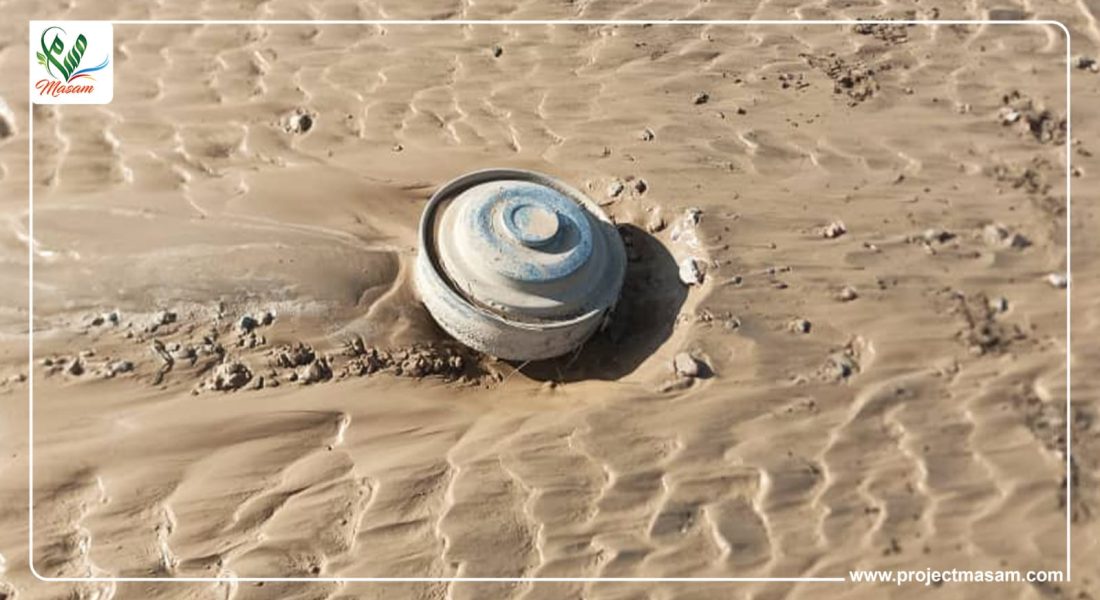A child has been killed by a Houthi landmine today while he was grazing sheep in the south of Hays district, in one of the most heavily mined areas in Yemen.
The leader of Masam Team 26, Sami Saeed, confirmed that the child, a 12-year-old boy named Muhammad Amin, was killed due to the explosion of an anti-tank mine planted by the militia in Dami area of Hays district, in the south of Al-Hodeidah governorate
Engineer Saeed added that the young boy was grazing sheep this morning when he was killed by the blast.
The team leader confirmed that, after he received a report about the explosion, his team was dispatched to the scene of the explosion to secure the site, and collect the remains of the young boy, who is expected to be buried soon.
Saeed pointed out that Dami is one of the areas that are most affected by landmines in Hays district, where the Houthi militia has indiscriminately planted banned anti-personnel mines, and anti-tank mines.
He added that Project Masam teams have worked during the past months to clear thousands of mines from farms, sheep pastures and roads, but the sheer amount of landmines and the random manner in which they have been planted is one of the main causes of landmine accidents.
Unclear circumstances
It is unclear what caused the anti-vehicle/tank mine to detonate.
Anti-tank mines – especially Yemeni-manufactured ones – are typically larger and contain several times more explosive material than anti-personnel mines. Anti-tank mines have in some cases also been modified with sensitive pressure plates to become large anti-personnel landmines in some regions of Yemen.
Activation pressure for anti-tank mines, which typically carry between 2 and 9kg of explosives, without a pressure plate switch is around 120kg. Activation pressure for an anti-tank mine with a pressure plate is between 1.8kg (with a 26cm pressure plate) and 8kg (with a 40cm pressure plate).
In comparison, anti-personnel mines typically have 10-250g of explosives and require as low as 5kg of pressure to detonate.
The Houthis increased their use of anti-personnel pressure plate triggered anti-vehicle landmines, over the past couple of years.
In Yemen, Project Masam teams have also encountered and cleared anti-tank mines that had been fitted with improvised hand grenades.
Placed under the landmines, the booby-traps are designed to explode if removed by any unsuspecting deminer or civilian. By detonating, the hand grenades in turn initiate the primary mine charge.
These locally-produced booby-trapped mines make mine clearance even more dangerous, as whilst standard anti-tank mines have a blast radius of 50 meters when activated by over 120kg of pressure, they become large anti-personnel mines when a deminer lifts the device that automatically activates the detonation mechanism.
Corroded anti-tank mines can also become more sensitive to pressure, meaning they have the propensity to become anti-personnel threats.
The use of anti-personnel landmines is prohibited under the 1997 Mine Ban Convention, to which 164 countries are party.

